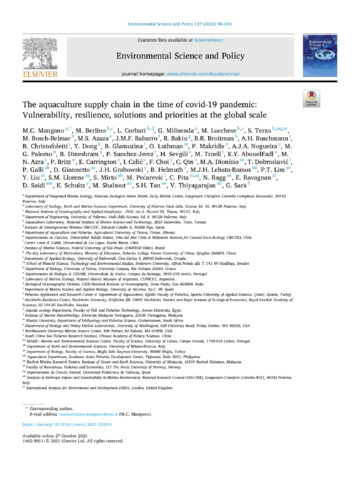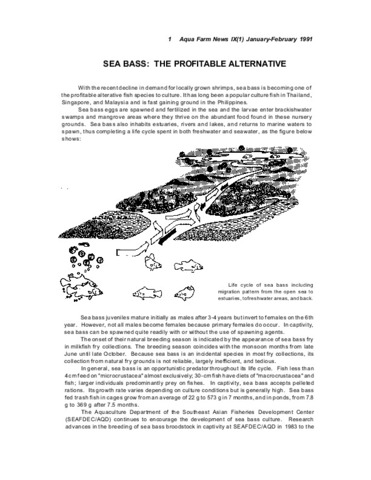The aquaculture supply chain in the time of covid-19 pandemic: Vulnerability, resilience, solutions and priorities at the global scale
- Global styles
- MLA
- Vancouver
- Elsevier - Harvard
- APA
- Help
Share
นามธรรม
The COVID-19 global pandemic has had severe, unpredictable and synchronous impacts on all levels of perishable food supply chains (PFSC), across multiple sectors and spatial scales. Aquaculture plays a vital and rapidly expanding role in food security, in some cases overtaking wild caught fisheries in the production of high-quality animal protein in this PFSC. We performed a rapid global assessment to evaluate the effects of the COVID-19 pandemic and related emerging control measures on the aquaculture supply chain. Socio-economic effects of the pandemic were analysed by surveying the perceptions of stakeholders, who were asked to describe potential supply-side disruption, vulnerabilities and resilience patterns along the production pipeline with four main supply chain components: a) hatchery, b) production/processing, c) distribution/logistics and d) market. We also assessed different farming strategies, comparing land- vs. sea-based systems; extensive vs. intensive methods; and with and without integrated multi-trophic aquaculture, IMTA. In addition to evaluating levels and sources of economic distress, interviewees were asked to identify mitigation solutions adopted at local / internal (i.e., farm-site) scales, and to express their preference on national / external scale mitigation measures among a set of a priori options. Survey responses identified the potential causes of disruption, ripple effects, sources of food insecurity, and socio-economic conflicts. They also pointed to various levels of mitigation strategies. The collated evidence represents a first baseline useful to address future disaster-driven responses, to reinforce the resilience of the sector and to facilitate the design reconstruction plans and mitigation measures, such as financial aid strategies.
Keywords
Perishable food supply chain Disruption Economic distress Mitigation measures Integrated multi-trophic aquaculture Stakeholder perceptions Rapid assessment COVID-19 effectsการอ้างอิง
Mangano, M. C., Berlino, M., Corbari, L., Milisenda, G., Lucchese, M., Terzo, S. M. C., Bosch Belmar, M. d. M., Azaza, M. S., Babarro, J., Bakiu, R., Broitman, B., Buschmann, A., Christofoletti, R., DONG, Y., Glamuzina, B., Luthman, O., Makridis, P., Nogueira, A., Palomo, M. G., ... & Sarà, G. (2022). The aquaculture supply chain in the time of covid-19 pandemic: Vulnerability, resilience, solutions and priorities at the global scale. Environmental Science & Policy , 127, 98-110. https://doi.org/10.1016/j.envsci.2021.10.014
Type
ArticleISSN
1462-9011; 1873-6416คอลเลกชัน
- Journal Articles [1256]
Related items
Showing items related by title, author, creator and subject.
-
[The Philippines recommends for milkfish:] Pond culture
Corre Jr., Valeriano L.; Saclauso, Crispino A.; Garcia, Yolanda T.; Salayo, Nerissa D.; The Milkfish Technical Committee 2016 (DOST-PCAARRD, 2016) -
Sea bass: The profitable alternative
Southeast Asian Fisheries Development Center, Aquaculture Department (Aquaculture Department, Southeast Asian Fisheries Development Center, 1991) -
A perspective of the carp industry in the Philippines
Southeast Asian Fisheries Development Center, Aquaculture Department (Aquaculture Department, Southeast Asian Fisheries Development Center, 1996)Fish farmers in Laguna de Bay are facing conflict of the use of the lake which is being tapped as freshwater source for domestic use. The article documents the perspectives of some fish farmers and researchers on the ...






